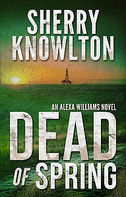 After a too-long hiatus from my blog, I am delighted to be joined today by Sherry Knowlton, author of DEAD OF SPRING (2017). I asked Sherry to talk about how she researches her novels, and below she shares some terrific insights into how she balances authenticity and readability. (Basically, how to keep your reader entertained while being accurate at the same time!) In popular culture, authors are often portrayed as brooding figures who seethe with creativity. After long, pensive walks along a cliff (or dock, or meadow), the authors return to their garrets and type pages and pages of inspired prose.
For me, it doesn’t work quite that way. You’re more likely to find me writing in my sunroom in winter or in the gazebo on a nice summer’s day. And, I like to take walks, but I work out most of my plots in the car while I’m driving to yoga. Yes, there’s certainly a large element of creativity and inspiration involved in writing my Alexa Williams suspense series. But, much of my process involves a more mundane – although often fascinating-- task: research, research, research. Some genres of fiction might not require much, if any, in-depth research. (Certain fantasy novels spring to mind.) But, I write contemporary suspense, and each of my novels also include a historical story that parallels and intersects with the main plot. So, I want the background details in both stories to be as accurate as possible to enhance the novel’s “believability” and credibility. Plus, I don’t want my readers to drift away from the suspense, distracted by a historical anomaly or incorrect fact. (Wait a minute. Would that Depression-era character really have said, “Awesome, dude”?) I rely on some of my own experiences and knowledge of a topic or place as I write. But, often, I need to do further research to refresh my memories or obtain more specific information. My research follows two broad paths: learning from written, video and audio sources; and, interviewing experts. My new book, Dead of Spring, deals with fracking and politics. The historical story takes place during the Three Mile Island nuclear crisis in 1979. The setting for the contemporary story is Southcentral Pennsylvania, but my protagonist, Alexa, also travels to Tuscany and Umbria. I live in Southcentral PA. I worked in Pennsylvania state government. I’ve been following the politics of fracking for years. I lived through the Three Mile Island crisis. And, I’ve spent time in Italy. Still, that experience was not enough. I needed to review a lot of source material to fully capture these topics in my book. These sources ranged from technical articles and regulations on fracking to news clips and newspaper articles from the Three Mile Island event to Italian justice procedures. I might be able to get away with just delving into books and relying on the Google for my information. But, experts always add so much depth to my understanding of a topic. The acknowledgement sections in my novel are quite long because talking to experts has become a key pillar of my research process. And, I’ve been lucky to find subject matter experts on a wide variety of topics who have been very gracious with their time and expertise. For Dead of Spring, I relied on a State Police trooper and several other law enforcement officers, a judge, a historian responsible for the preservation of the Pennsylvania State Capitol, staff from Pennsylvania’s Lt. Governor’s office, a regulator in the state’s Department of Environmental Programs, gun experts, and more. One of the most helpful experts I interviewed was a landowner in northern Pennsylvania who leased his land to a hydraulic fracturing company in the early days of the state’s fracking boom. He took me on a tour of both his lands and other fracking sites at different stages of development. He also walked me through his personal experience by showing me his photographs of the transformation of his property. A beautiful woodland that step by step by step turned into an acre of gravel and machinery. Pristine drinking water that now requires constant filtering just for showers and bathing. Battles with the energy company about compensation for various problems. His fracking tutorial was eye-opening. Of course, research is only one aspect of the writing process...
1 Comment
Writers are frequently enjoined to "write what they know," and my guest blogger today has certainly taken that message to heart. Edith Maxwell, author of the the forthcoming historical mystery, Delivering the Truth, features a Quaker midwife in 19th century New England. Edith is a Quaker, has taught childbirth classes, and lives in New England. So I guess she knows what she's talking about!!! 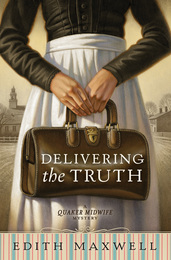 From the official blurb: For Quaker midwife Rose Carroll, life in Amesbury, Massachusetts, provides equal measures of joy and tribulation. She attends to the needs of mothers and newborns even as she mourns the recent death of her sister. Likewise, Rose enjoys the giddy feelings that come from being courted by a handsome doctor, but a suspicious fire and two murders leave her fearing for the well-being of her loved ones. Driven by her desire for safety and justice, Rose Carroll begins asking questions related to the crimes. Consulting with her friends and neighbors―including the famous Quaker poet John Greenleaf Whittier―Rose draws on her strengths as a counselor and problem solver in trying to bring the perpetrators to light. 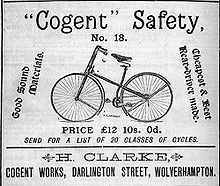 Bicycle of the sort Rose Carroll might have used Bicycle of the sort Rose Carroll might have used In my Quaker Midwife Mysteries, Rose Carroll is a midwife helping pregnant women give birth in the safest way possible - in the 1888 New England mill town of Amesbury. She’s twenty-four, as yet unmarried, and a Quaker. Rose is an independent businesswoman, unconventional both for going about her business on her bicycle and for being a member of the Society of Friends. Quakers have long been known for being unconventional, though, and New England Friends of the era even more so. Rose’s mother works tirelessly for women’s suffrage. Rose’s friend and mentor, the real John Greenleaf Whittier, was an outspoken abolitionist and supported equality among his fellow humans. Rose addresses everyone by their first name regardless of social class or occupation, and speaks using “thee” and “thy” as Quakers did, so she’s used to traveling outside certain norms. She’s also known for her honesty and clean living. Her clients trust her. Although there was a New England Female Medical College, which was a training school for midwives, Rose took the traditional route and apprenticed with Orpha Perkins to learn her trade. When the elderly Orpha retires, Rose takes over her business. The late 1880s is a fascinating period to write about because so much was changing, including the practice of midwifery and medicine. The germ theory of infection was known, so Rose is careful to wash her hands and keep the birthing chamber clean. A new hospital had been built across the river in the bustling seaport town of Newburyport only a few years earlier. Cesarean sections were done, but it was still a very risky procedure. And male doctors were starting to do deliveries, practicing obstetrics. I read that this practice increased in part because women working in factories were living away from their female relatives who would normally support them through the birth and postpartum period. The husband of one of Rose’s clients insists that his baby be delivered by a male doctor, but most of Rose’s pregnant clients much prefer having a woman attend them. I also read an account of a Massachusetts midwife being sued in 1905 for practicing medicine without a license. I haven’t heard of such accusations twenty years earlier, however. Of course, being a midwife makes Rose a perfect protagonist. She can go places no male police officer can – women’s bed chambers – and hears secrets the detective isn’t privy to, both during labor and at client visits. I know in earlier times midwives had a obligation to extract information from unwed mothers about the father of the baby and report him to the authorities, but I haven’t been able to unearth whether that practice still stood at the end of the nineteenth century. (See Sam Thomas' excellent post on the role of midwives in 17th century England, for example. -SC) 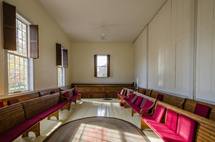 Meetinghouse interior. Photo by Edward Gerrish Mair, used with permission Meetinghouse interior. Photo by Edward Gerrish Mair, used with permission I’m delighted to follow Rose around the streets of my town where many of the buildings of the late 1880s still stand, including the Friends Meetinghouse where she and Whittier worship, and write down her adventures. 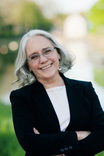 Edith Maxwell writes the Quaker Midwife Mysteries (Midnight Ink) and the Local Foods Mysteries, the Country Store Mysteries (as Maddie Day), and the Lauren Rousseau Mysteries (as Tace Baker), as well as award-winning short crime fiction. Her short story, “A Questionable Death,” is nominated for a 2016 Agatha Award for Best Short Story. The tale features the 1888 setting and characters from her Quaker Midwife Mysteries series, which debuts with Delivering the Truth on April 8, 2016. Maxwell is Vice-President of Sisters in Crime New England and Clerk of Amesbury Friends Meeting. She lives north of Boston with her beau and three cats, and blogs with the other Wicked Cozy Authors. You can find her on Facebook, @edithmaxwell, on Pinterest, and at her web site, edithmaxwell.com. Want to know more about the original Quakers from 17th century England? Check out my discussion of the political activities and writing of Quaker women. Or this post on their last dying speeches.
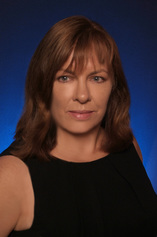 I'm thrilled to be joined today by Alison McMahan, author of The Saffron Crocus, a Young Adult novel set in 17th century Venice. From the synopsis: Venice, 1643. Isabella, fifteen, longs to sing in Monteverdi’s Choir, but only boys (and castrati) can do that. Her singing teacher, Margherita, introduces her to a new wonder: opera! Then Isabella finds Margherita murdered. Now people keep trying to kill Margherita’s handsome rogue of a son, Rafaele. Was Margherita killed so someone could steal her saffron business? Or was it a disgruntled lover, as Margherita—unbeknownst to Isabella—was one of Venice’s wealthiest courtesans? Or will Isabella and Rafaele find the answer deep in Margherita's past, buried in the Jewish Ghetto? Isabella has to solve the mystery of the Saffron Crocus before Rafaele hangs for a murder he didn’t commit, though she fears the truth will drive her and the man she loves irrevocably apart. 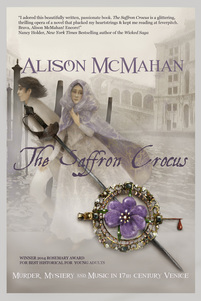 Sometimes readers ask me why I set my YA historical mystery/romance novel in Venice in 1643. Why 1643? Most novels set in Venice are set during its heyday, from the 1300s to the 1500s. Or they are set in Vivaldi's Venice of the 18th century. Or they are set in the 19th century, mirroring the society Henry James setting in novels like Wings of the Dove. But the 17th century in Venice doesn't get much love. Venice was in decline, in between its period of grandeur and the invasion by the Ottoman Turks and Napoleon. Periods of decline are historically just as interesting as periods of greatness. There is much we can learn from them. I picked 1643 Venice for seven special reasons: 1. THE BLACK DEATH. In 1630 Venice, and the rest of what we now call northern Italy, was hit by the Bubonic Plague. Eighty thousand lives were lost in just seventeen months in Venice laone. On the 9th of November, for example, five hundred and ninety-five died. These enormous fatalities greatly affected the city. Even the Doge, Nicolò Contarini passed away. I wanted my heroine, Isabella, to have lost her parents at the age of five to the plague, and to be fifteen at the time the story begins, so the date of the of the story had to be 1643. 2. THE BIRTH OF OPERA. Yes, I know most teens consider opera to be uncool at best, unmentionable at worst. But I'm an opera fan, so there's a little bit of "write what you know" here, and I was hoping that my own love of opera would communicate itself through the pages. The word "opera" itself is an Italian word – it means "labor" or "work" in Italian. Opera originated in Italy when courtiers decided they preferred the "intermezzi," the light-hearted singing and dancing interludes that broke up heavy Roman plays, to the plays themselves. Opera evolved from these Intermezzi. The first complete opera, "Euridice" by Jacopo Peri was performed in Florence in 1600. 3. MONTEVERDI: If, like me, you are a fan of what the human voice can do in song, then you are a fan of Monteverdi. At the time the story of The Saffron Crocus takes place, Monteverdi was the musical director of the chorus of San Marco's Basilica. Because I admire his music so much, I wanted to give him a small role. My heroine wants to sing for the chorus, but only boys can do that, and she uses various ruses to get what she wants, which pits her against Monteverdi. 4. LOST OPERAS: There is something so romantic about lost works of art. Of course, in the 1600s, opera performances weren't recorded. But the scores were written down. You'd think it would be easy enough to keep a score, and copy it over when you need to. But one of the world's greatest operas, L'Arianna, is a lost opera. All we have is one recitative from it, "Arianna's lament," which plays a key role in my story. 5. CASTRATI: Castrati were male singers who were castrated before puberty to keep their voice artificially high. In other words, the baroque world was so opposed to women singing that they preferred to castrate little boys (only a lucky few survived the procedure) rather than let women perform. I was fascinated both by castrati themselves – what were their lives like? And enraged by the idea that Venetian society would prefer to go that far rather than let women sing. A key character in the story is a castrati. 6. CONCERTO DELLE DONNE (consort of ladies). Women could sing in private homes. This practice started after Alfonso II, Duke of Ferrara, who established the first group of "amateur" singers to perform for him. They were considered "amateur" because they were women and could not perform professionally (that is, for pay), but in fact they were renowned for their technical and artistic virtuosity. I know professional musicians today who have tried to re-create some of their music and couldn't do it. My heroine sings in salons before she finds a way to sing professionally. 7. THE JEWISH GHETTO: The Jewish Ghetto in Venice was not the first, but it is where we get the name. The English term "ghetto" is an Italian loanword, which actually comes from the Venetian word "ghèto", slag, and was used in this sense in a reference to a foundry where slag was stored located on the same island as the area of Jewish confinement. I have always been fascinated by how the Jews lived in Venice, and almost half of the book takes place there. I could go on and on about what was special about Venice in 1643, as Venice is endlessly fascinating, but I'll stop there. Read the book, or better yet, listen to some of this music, preferably in Venice itself! Alison McMahan chased footage for her documentaries through jungles in Honduras and Cambodia, favelas in Brazil and racetracks in the U.S. She brings the same sense of adventure to her award-winning books of historical mystery and romantic adventure for teens and adults. Her latest publication is The Saffron Crocus, a historical mystery for young. Murder, Mystery & Music in 17th Century Venice. She loves hearing from readers. Feel free to check out her website, visit her on instagram, pinterest, tumblr, or on Facebook, or just send her a tweet! Her books can be found at Black Opal Books, AMAZON US; AMAZON UK.
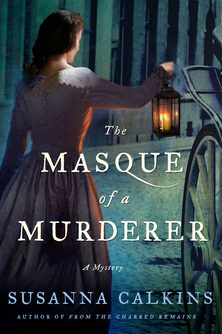 I'm so happy and honored to say that my third historical novel, The Masque of a Murderer, officially launches today, April 14! And while I may not be quite as giddy when my first novel, A Murder at Rosamund's Gate (2013) launched two years ago--because nothing can ever compare to the release of a first novel--I'm still as loopy as I was last year, when From the Charred Remains (2014) entered the world. Recently, in preparation for the launch, I've been answering a lot of fun and interesting questions about The Masque of a Murderer (the historical background, the story and characters, and my writing process etc). So, I thought I'd do a quick round-up here! I welcome you to:
Thanks so much for sharing this journey with me!!! And I appreciate all the bloggers and reviewers who hosted me, including those through Amy Bruno's Historical Fiction Virtual Blog Tours! And I'm always so grateful to the wonderful people at Minotaur, especially Kelley Ragland and Elizabeth Lacks, and my agent David Hale Smith, and of course my wonderful alpha reader, Matt Kelley!! (and now, I turn my attention back to A DEATH ALONG THE RIVER FLEET, due out April 2016!!!!) I am excited that Sam Thomas, author of The Midwife Mysteries, was able to join me on my blog today! To celebrate the fact that The Midwife's Tale is now available as an E-Book for just $2.99, Sam shares the story behind his cover! (Head over to Amazon or Barnes & Noble to pick up your copy!) One question that a lot of readers have asked is how The Midwife’s Tale wound up with its cover, and whether I had any say in its creation. It’s a pretty great question with an interesting answer. When I envisioned the cover of The Midwife’s Tale, I wanted it to look like a seventeenth-century book, largely in keeping with my original title, Bloody News from York. The image I had in mind was something like this book from 1635: I thought that this cover would both capture my setting and the central tension of the book, whether a woman would be burned at the stake. Unfortunately, kept this idea to myself for a bit too long, and before I said anything to my editor, he sent this cover: I was floored. I loved the darkness, the color scheme, the way the light played across the figure’s back… nearly everything about it.
The one concern my agent had was that it seemed a bit too still. I had written a murder story, after all, and he thought it could use a bit more danger. We suggested putting a knife in her hand, and perhaps replacing the stalks of grain on the table with a mortar and pestle. This is where Minotaur came through for me the first time. By all rights, they could have said, “Nope, this is it.” But they didn’t. They came back with a modified cover: 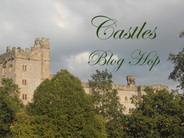 Today, I'm taking part in a "blog hop" celebrating the launch of Castles, Customs and Kings, a compilation of essays from the English Historical Fiction Authors blog. If you go to the blog, you can enter for a chance to win a free copy! "Read the history behind the fiction and discover the true tales surrounding England's castles, customs, and kings." --Official excerpt 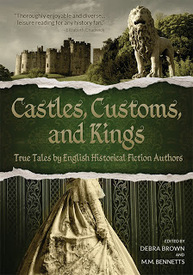 I have a piece in here about the political activities of Quaker women, who spent a lot of time speaking against the King. But today, since a number of bloggers are discussing palaces and castles, I thought I would write about my personal experience living near the ruins of Winchester Palace in London. *********************************************************************************** 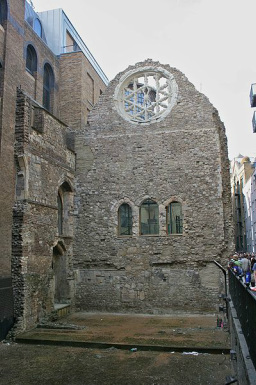 Photo: Mike Peel. 2009. www.mikepeel.net Photo: Mike Peel. 2009. www.mikepeel.net When I was a pirate serving aboard the Golden Hinde, the museum replica of Sir Francis Drake's ship dry-docked in the Thames--(okay, I was a tour guide or 'living history interpreter')--I spent a lot of time gazing at the ruins of Winchester Palace. Located in Southwark, near Shakespeare's Globe, the Clink and the Anchor (most fun pub in London), the ruins of the 13th century Winchester Palace loom incongruously from a modern parking garage (Car park!) 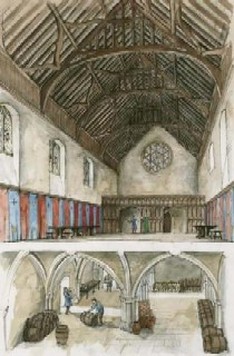 Liam Wales © Eng. Her. Photo Library Liam Wales © Eng. Her. Photo Library Not to be confused with the more illustrious Winchester Castle--or Winchester Cathedral, as many a dismayed tourist has done—Winchester Palace was founded by Bishop Henry de Blois, brother of King Stephen, in the early 13th century. It was designed to serve as a place for visiting bishops to stay when they journeyed to London. According to the English Heritage website, the Palace once consisted of a Great Hall, which led to a buttery, pantry and kitchen. In its late medieval heyday, the Palace had been a site of great spectacle, feasts and grand dinners, even have hosted the wedding dinner of James I of Scotland and Joan Beauford in 1424. The majestic qualities of the palace are suggested by the presence of a rose window, a common feature of more lavish churches and palaces built in this time. There is also evidence that the palace had a tennis court, bowling alley and pleasure gardens, to keep the bishops entertained while on royal and administrative business. Underneath the hall was a vaulted wine cellar, no doubt full of great vats and bottles to keep the bishops and their guests merry. There was also a passageway to the river wharf along the south bank of the Thames, to bring supplies into the Palace. The palace seems to have been surrounded around two courtyards, a brew-house and butchery. The Clink prison, under the auspices of the Bishop of Winchester, was also nearby. (Yes, this is where we get the phrase being ‘thrown in the clink.’) 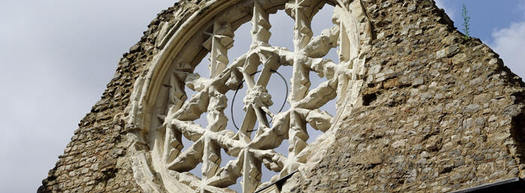 The Rose Window http://www.english-heritage.org.uk The Rose Window http://www.english-heritage.org.uk After the Reformation and King Henry VIII’s dissolution of many church properties, the palace changed its purpose. By the 17th century it was divided into tenements and warehouses. In the 19th century, much of the palace was destroyed in a fire in 1814. The ruins remained in disrepair until the 1980s when the area began to be redeveloped. Now only the bare remains and beautiful rose window suggest the former grandeur of the Palace. When I used to lead school children on tours of the ship, we’d often pause by the Palace ruins. There, I couldn’t help but whisper about the mysterious happenings the Golden Hinde crew had all witnessed during our long moonlit stints on ship watch... A shadow moving slowly through the grounds, when the source of the movement could not be detected.... A flock of black birds, arrayed in a perfect circle, as if convened at a great table.... And most odd of all: one night, our whole crew heard the strands of a madrigal being sung from deep within the ruins...By the time one of us mustered up the courage to peer over the guardrail, the unknown singers had vanished. To this day, I sometimes wonder who those anonymous singers were... But that's the intriguing romance and mystery of the ruins of Winchester Palace.... Guest Post in Writer's Digest: Balancing authenticity and accuracy while writing historical fiction9/8/2013 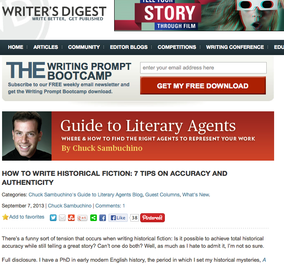 My post in WD appeared Sept 6, 2013 My post in WD appeared Sept 6, 2013 A few years ago, when I was first trying to figure out how to get my debut novel A Murder at Rosamund's Gate published, I came across Writer's Digest. Full of advice for the fledgling writer and published author alike, Writer's Digest gave me some great insights into what I needed to do to polish my manuscript and write a compelling cover letter. (I mean, tell me it's not important to know "How to see your work through an agent or publisher's eyes?" or, "Knowing when to stop: Expectations for a satisfying ending.") So I really appreciated the opportunity to write a guest post, "How to write historical fiction: 7 tips on accuracy and authenticity" for Writer's Digest. In this post, I talk about the tensions I've experienced as a historian-turned-novelist, while writing historical fiction. I also try to offer a few strategies that have worked for me in reconciling these tensions. Check it out! And while you're there, try out the daily writing prompt! Although I have to giggle, because today the prompt is: "You are a local news reporter for a failing network. Your boss tells you to ramp up the news by getting “creative” and constructing your own stories. What’s the first fake news story you create and broadcast on air?" Fake News! Totally fun! Accuracy Shmackeracy! If you do take up the challenge, will you post it here too? I'd love to see it! 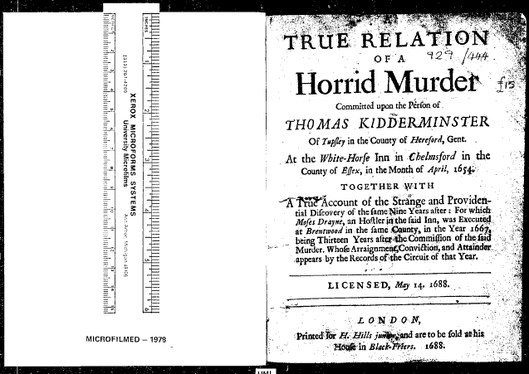 Date: 1688 Reel position: Wing / 853:61 Fans of Sherlock Holmes may be intrigued to know that the first known female sleuth in England was Anne Kidderminster (nee Holmes), a seventeenth-century widow who tracked down and brought her husband’s murderer to justice thirteen years after the crime. To find out more, check out my guest blog over on Criminal Element, found under the excerpt of A Murder at Rosamund's Gate. 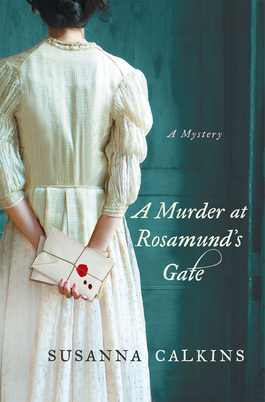 I'm still on a hiatus from this blog for a little while longer...but I've been having fun writing guest posts and doing interviews for other blogs, webzines and even my local paper. To see what I've been writing about, please check out my virtual tour. Also, I received the official HARD COPY of A Murder at Rosamund's Gate yesterday in the mail!!!! That's about as exciting as it gets!!! Oh, and my book was selected as a Barnes & Noble Booksellers' Pick for April! What an honor...I'm thrilled! What's going on here?
You'll have to check out my post on A Bloody Good Read: Where Writers and Readers of Mysteries Talk Shop to find out!!! |
Susanna CalkinsHistorian. Mystery writer. Researcher. Teacher. Occasional blogger. Categories
All
Archives
May 2023
|
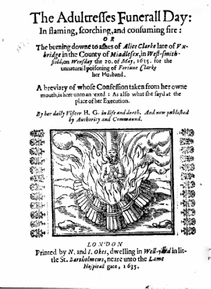
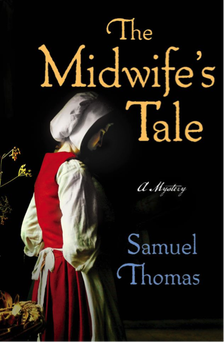

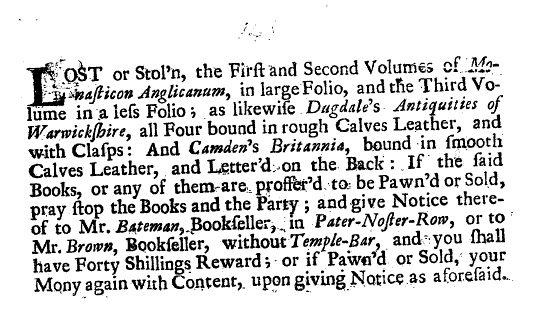
 RSS Feed
RSS Feed